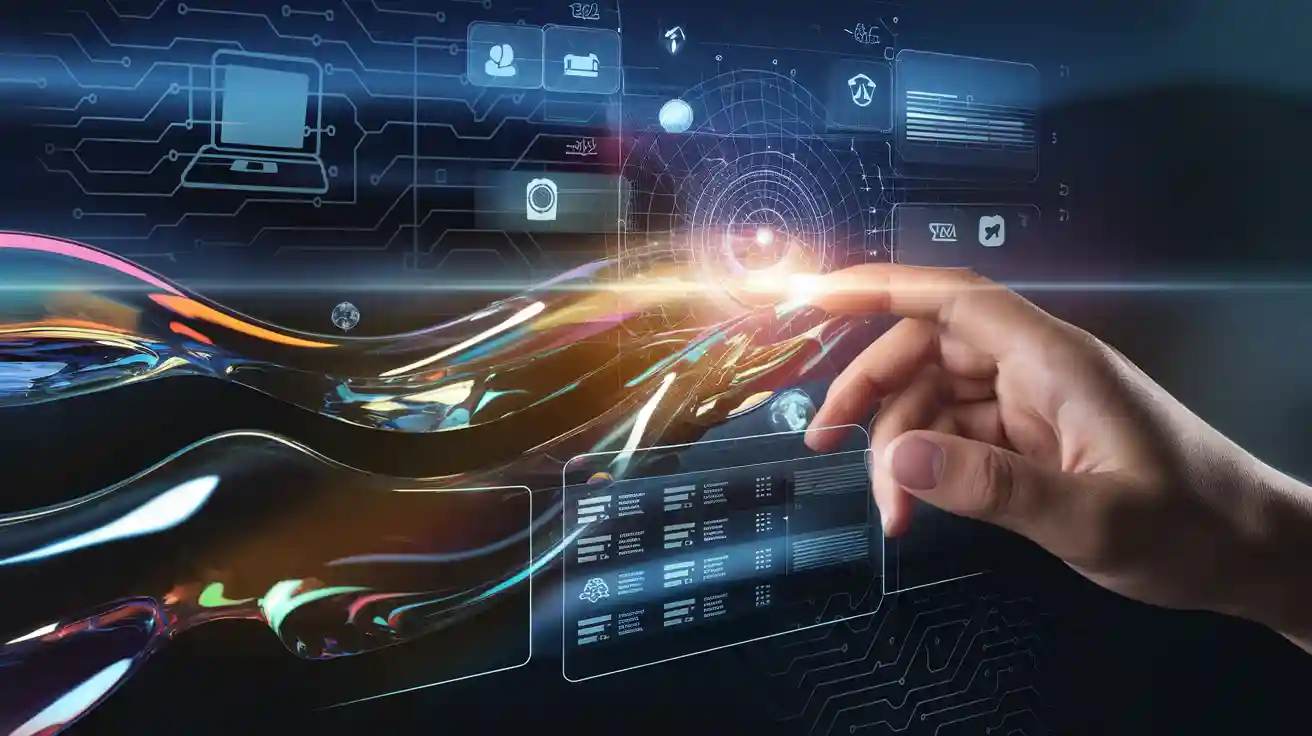Call us: +86-137-2353-4866
Technology changes how people work, travel, and talk each day. The human-machine interface is the key link between people and machines. It makes hard devices easy for anyone to use. Studies show that adaptive human-machine interfaces help people do less work and do better. These include touchscreen panels and smart sensors. SOUSHINE is a top human machine interface maker. They build solutions that make technology safer and easier to use. New HMI design, plc interface, and hmi scada system help people use machines better. Now, people can use machines with simple controls like plc hmi and touchscreen panels.
Table of Contents
Key Takeaways
- Human-machine interfaces help people use machines. They make technology easier and safer for everyone. Good HMI design lets people work faster. It helps them avoid mistakes. People can also control machines from far away. HMIs can be physical or digital. Some are advanced, like touchscreens, voice, and gesture controls. Strong HMI systems keep people safe. They give clear information and help stop errors in busy or dangerous places. User-friendly HMIs help people with different needs. They use simple layouts and clear feedback. They also have features for accessibility. HMIs are important in many industries. These include manufacturing, healthcare, automotive, and consumer electronics. In the future, HMI trends will use AI. They will also use voice and gesture control. IoT connectivity will make systems smarter and more flexible. SOUSHINE is a leader in advanced HMI solutions. They use force sensing and membrane switch technology. This helps improve control and reliability.
Human-Machine Interface Basics
What Is a Human-Machine Interface
A human-machine interface links people and machines. It uses hardware and software together. Hardware includes things like screens, buttons, and touch panels. Software is the programs and systems that run on the hardware. The human-machine interface is the main way people control and watch machines. Many industries have rules for human machine interface design. These rules make sure the system is safe and simple to use.
The table below explains how hardware and software work as a team in a human-machine interface:
| Aspect | Description |
|---|---|
| Hardware | Terminals, displays, input/output ports, buttons, levers, programmable keys, and touchscreen panels. |
| Software | Application programs, operating systems, network modules, and drivers. |
| Functional Role | Allows people to control, monitor, and collect data from machines. |
| Standards & Usage | Used in robotics, hmi scada system, industrial automation, and modern control systems. |
SOUSHINE is a leader among human machine interface makers. The company gives complete HMI solutions with force sensing and membrane switch features. These help make interfaces that are strong and simple for many products.
Core Functions of HMIs
The main purpose of an HMI is to help people use machines. HMIs do this by:
- Changing to match what the process and operator need.
- Showing important details so the operator can focus.
- Updating the display for new info or small spaces.
- Picking the best way to show info, like graphs or alarms.
- Giving info at the right time for the process and operator.
- Letting people watch and control machines from far away, often with a hmi scada system.
- Collecting and showing data right away, using reports and trend graphs.
- Helping people use the system from different places.
A good HMI design helps people avoid mistakes and make smart choices. SOUSHINE’s solutions use pressure-sensitive tech and membrane switches for better use and trust.
Types of Human-Machine Interfaces
Physical Interfaces
Physical interfaces use hardware like buttons, levers, and switches. Many factories have control panels with these parts. Some systems use a plc interface or plc hmi to control machines. These interfaces give quick feedback and are simple to use.
Digital Interfaces
Digital interfaces use touchscreen panels and graphical user interfaces (GUIs). These let people control machines by touching screens or clicking icons. Digital interfaces show more info and are easy to update. Many hmi makers now focus on digital options for more flexibility.
Advanced Interfaces
Advanced hmi systems use new tech like voice commands, gesture controls, and brain-computer links. These make using machines feel more natural and help people with disabilities. SOUSHINE is a leader here, offering advanced hmi solutions with force sensing and membrane switch features. These let people control more things and have a better experience.
Note: Human machine interface makers like SOUSHINE help companies build modern, strong, and easy-to-use HMIs for many industries.
Importance of Human Machine Interface
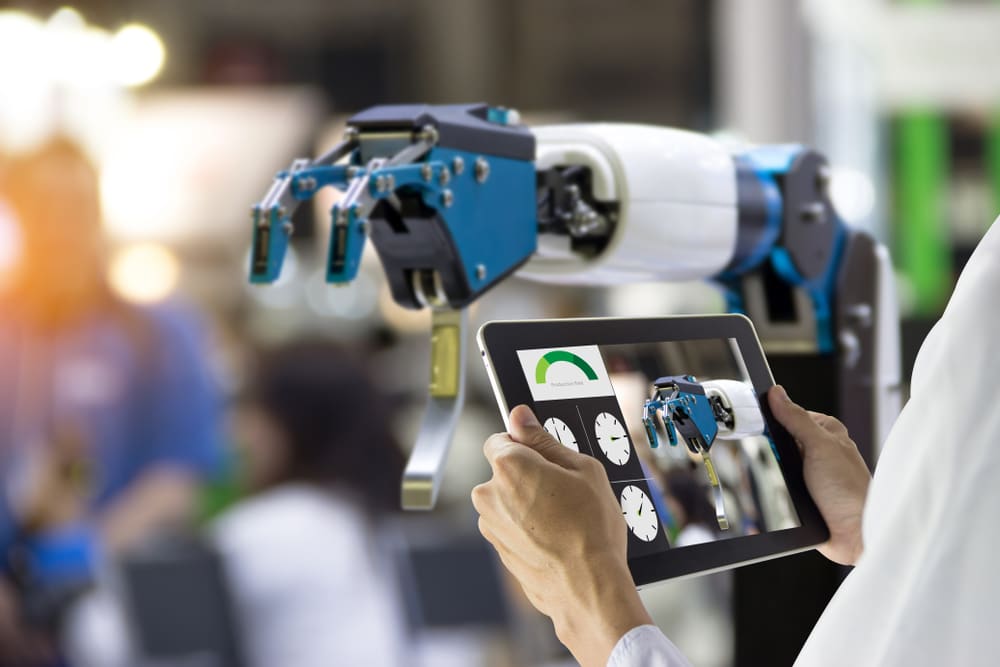
Efficiency and Productivity
A good hmi helps people work faster and better. Operators use hmi systems to watch and control machines quickly. These systems help stop accidents and mistakes at work. This means less waiting and faster delivery of products. Operators can see live data about energy use. They can change machine settings to save power and spend less money. AI-based hmi solutions find problems early. This stops big issues before they happen.
- HMIs let operators control machines from far away. This keeps people safe and helps them work faster.
- They cut down on manual work by letting people watch and control machines from a distance.
- Operators spend less time running machines because hmi systems make jobs easier.
- HMIs check quality for less money and help people get more done.
- Many places like factories, power plants, and water plants use hmi scada system setups to control work well.
Research shows that human machine interface design changes how much people get done. When designers use good rules for comfort and looks, operators feel better and work better. Eye-tracking studies show that new hmi layouts help people finish jobs faster and make fewer mistakes. This proves that putting users first in HMI design helps people do better.
SOUSHINE’s ready-to-use hmi assemblies help companies work better. These solutions use force sensing and membrane switch technology. This makes machine control more exact and trustworthy. By using SOUSHINE’s hmi, companies lower risk and get products out faster.
Safety and Reliability
Safety and reliability are most important in big systems. A good hmi lowers mistakes by giving clear info and easy controls. Bad interfaces can confuse people and cause more errors, especially when things get busy. Good HMI design makes it easier to focus on important jobs.
- Automated systems like the InSight-R framework use data to find risks and stop failures.
- Simple and clear interfaces help people avoid costly mistakes, especially in places like nuclear plants.
- Adaptive hmi systems can react to how the user feels. This keeps work strong even when things are stressful.
SOUSHINE’s hmi assemblies work well and can be trusted. These solutions use pressure-sensitive technology and membrane switches. This makes sure every input is right. SOUSHINE’s pre-checked assemblies help stop mistakes during setup and make things last longer. Companies trust SOUSHINE as a top hmi manufacturer for safe and strong solutions.
Usability and Accessibility
A user-friendly interface is important for a good experience. An easy-to-use interface helps people learn and control machines with less training. Good hmi design uses clear pictures, simple steps, and quick feedback to help users. This cuts down on mistakes and helps people make choices fast.
Best ways to make things usable and accessible include:
- Following rules like WCAG and Section 508 to help all users.
- Designing for different needs like seeing, hearing, moving, and thinking.
- Adding things like screen readers, captions, and other ways to control machines.
- Testing with many types of users and making changes from their feedback.
- Keeping layouts and words the same to make learning easier.
- Showing clear info and not adding too much stuff.
Case studies show that haptic interfaces help people with disabilities use machines. For example, smart wheelchairs with haptic feedback help users avoid things and move safely. Some systems use sensors so users can control wheelchairs with their face or tongue. This gives freedom to people who cannot move much.
SOUSHINE’s hmi solutions use pressure-sensitive force sensing and membrane switches. These features make touchscreen panels, plc interface, and plc hmi controls easier for everyone. SOUSHINE’s user-first way makes sure every hmi works for many people and gives a great experience.
Tip: Companies that put users first and use good hmi design make better products. This helps them stand out and makes life better for everyone.
HMI in Robotics and Automation
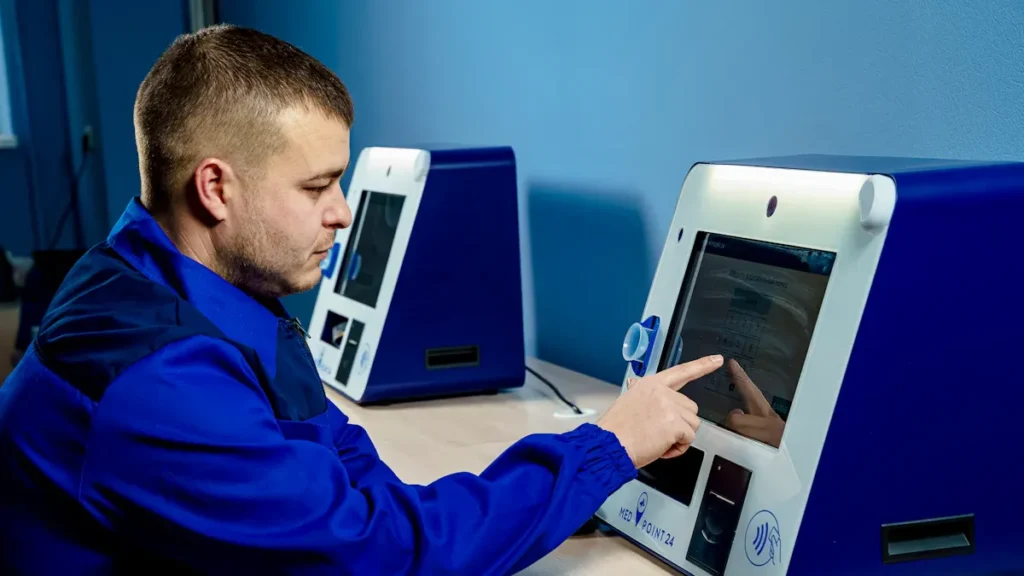
Role in Robotics
Human-machine interfaces are very important in robotics. They let people control robots and see what robots do. Operators use tablets, touchscreen panels, or special controllers to give commands. These tools help change a robot’s speed, direction, or job. Robots can also listen to voice commands or watch for gestures and faces. This makes robots more useful and safer for people.
Many robots have real-time feedback systems. These show what the robot is doing and warn if there is a problem. Augmented reality can put digital info over real things. This helps operators see robot status and choices. Collaborative robots, called cobots, work with people side by side. They use sensors and human machine interface design to stop accidents. SOUSHINE gives advanced HMI for robots. They use force sensing and membrane switch technology. These features help people control robots better and more exactly.
| Feature | Description | Benefit |
|---|---|---|
| Touchscreen Panels | Let users control robots with simple touches | Easy and fast interaction |
| Voice and Gesture Control | Robots follow spoken or physical commands | Hands-free operation |
| Real-Time Feedback | Shows robot status and alerts | Safer and smarter decisions |
| Force Sensing | Detects how hard a button is pressed | More control options |
Industrial Automation
Industrial HMI systems help factories and plants work well. Operators use HMI design to watch machines and fix problems. These systems connect with PLC interface and plc hmi controls. Workers can see live data and control machines from one place. Human machine interface makers like SOUSHINE build solutions with force sensing and membrane switches for better results.
Industrial HMI makes jobs easier and safer. Operators see alarms, machine status, and numbers on one screen. They can change settings fast to keep things running. This cuts down on mistakes and saves time. HMI scada system setups let people control and watch big sites. With these tools, companies work better and spend less. Using one vendor for all HMI needs makes buying and support easier.
- More work gets done with easy-to-use interfaces
- Live monitoring helps solve problems fast
- One control interface means less confusion
- Clear data helps people make better choices
- New workers learn faster with simple systems
Real-Time Monitoring
Real-time monitoring is very important in automated places. HMI panels show live data from machines and processes. Operators use touchscreen panels to change settings and check production. They can fix problems right away. These panels connect with PLCs and other controllers for up-to-date info. Real-time feedback helps spot problems before they get worse.
Modern HMI systems use screens instead of old push buttons. This makes it easier to run complex machines. Operators see charts, alarms, and numbers on dashboards. They can act fast to keep quality high and stop downtime. Web-based HMI lets workers control systems from anywhere. SOUSHINE’s HMI solutions use force sensing and membrane switches for good input and feedback. These features help real-time monitoring and keep companies ahead.
Tip: Picking the right HMI design and working with trusted hmi makers like SOUSHINE keeps control and monitoring safe, easy, and efficient in robotics and automation.
Engagement and User Experience
Intuitive Design
A good human machine interface design starts with an easy-to-use interface. Designers take away extra things to keep it simple. This helps people stay calm and focus on their work. Good HMI design thinks about who will use it, what they need, and where they are. For example, touchscreen panels in factories must work for people wearing gloves. Designers use rules that help people learn fast, work well, and feel happy. They show only the most important info first, then more if needed. This stops users from feeling lost or confused.
SOUSHINE uses pressure-sensitive technology in its HMIs. This lets people control machines with light or hard presses. It makes controls feel normal and quick to use. SOUSHINE puts users first, so every interface is friendly and simple to learn.
Tip: Keeping the same layout, colors, and buttons helps people trust the system and learn it faster.
Visual Feedback
Visual feedback is very important for users. When someone presses a button or touches a screen, they need to see that it worked. Lights, icons, or bars show users what is happening. This helps stop mistakes and keeps people interested. In a hmi scada system, operators see alarms and updates right away. This helps them act fast and stay safe.
A study in aerospace factories showed that adding visual feedback and listening to users made people happier and better at their jobs. The new design made work easier, cut down on mistakes, and helped people get more done. SOUSHINE’s HMIs use lights and clear screens to give quick feedback. This makes the experience smooth and helps people trust the system.
Customization
Customization lets people change the interface to fit their needs. Many people want to make their HMI simple or add more controls. They might want to change how things look, add shortcuts, or use it from far away. SOUSHINE’s HMIs let people do these things with flexible designs. Users can set up routines, watch data, and handle alarms in ways that work best for them.
| Customization Aspect | Description | Example Application |
|---|---|---|
| Interface Flexibility | Change screen layouts, add or remove features | General use, adaptable to needs |
| Environmental Adaptation | Adjust for lighting, noise, or user abilities | All domains |
| Pushbutton Replacer | Use digital buttons instead of mechanical ones | Manufacturing |
| Data Handler | Show trends, logs, and alarms on large displays | Monitoring and reporting |
| Overseer | Connect with SCADA/MES for site-wide control | Large industrial systems |
Smart customization learns what users like and gives better help. This makes human-machine engagement even better. SOUSHINE’s pressure-sensitive controls and flexible layouts help everyone get the best experience. These features make the interface easy for both new and expert users.
Note: Top hmi manufacturers and human machine interface manufacturers, like SOUSHINE, focus on customization to help people use their products better. Their solutions work with plc interface, plc hmi, and touchscreen panels to meet many needs.
HMI Applications Across Industries
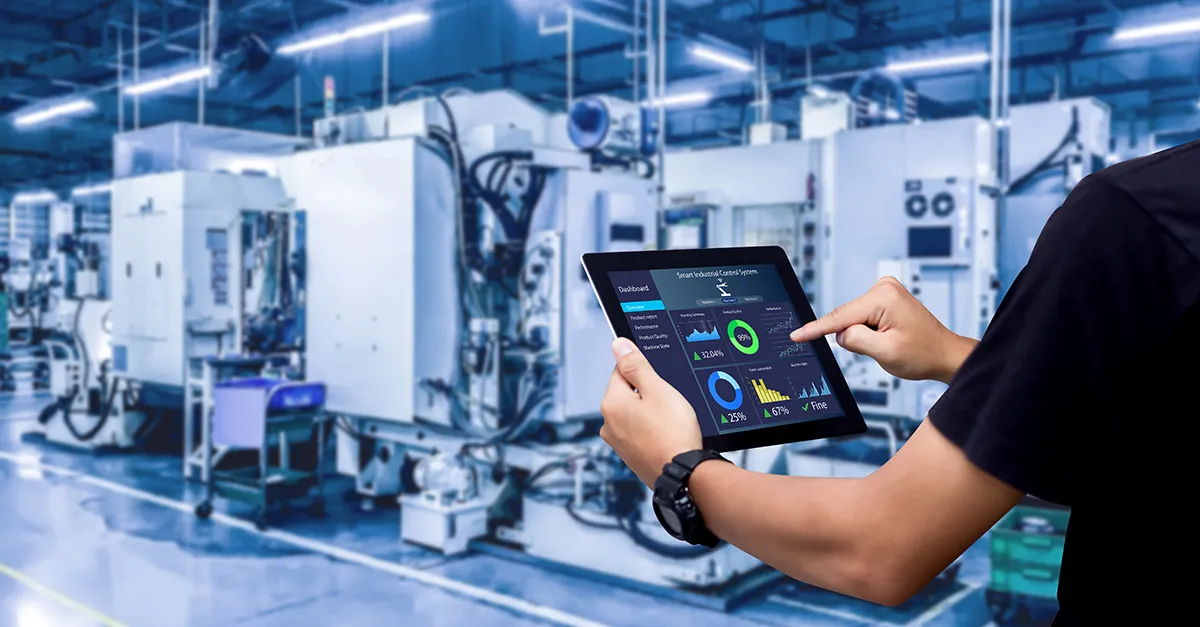
Manufacturing
Factories use human-machine interfaces in many ways. Workers use HMIs to watch machines and tools. These interfaces show live data to workers. Workers can see if machines work well or need help. In smart factories, real-time data and commands matter a lot. Operators use keypads, knobs, and touchscreen panels to give input. Displays and LED indicators give feedback to workers. HMI design helps workers control machines and spot problems early.
- HMIs show process data and alerts to help workers act fast.
- Touchscreen panels and icons make it easy to see trends and alerts.
- Operators check flow rates and chemical levels from one screen in water plants.
- Remote access lets workers watch and adjust machines from other places.
- HMIs show alarms and safety steps so workers can act quickly in emergencies.
- Step-by-step guides help workers follow safe steps in risky places.
Modern HMI design uses real-time monitoring and control. This helps workers respond to changes and fix issues fast. HMIs also help reduce mistakes and improve product quality. Factories can change settings quickly to meet new needs. AI and IoT make HMIs smarter and help predict problems early. Virtual and augmented reality help train workers safely and quickly. SOUSHINE is a top hmi manufacturer for factories. Their products use force sensing and membrane switches for better control and feedback.
Healthcare
Healthcare uses human machine interface design to make devices simple. Medical staff use HMIs on ventilators, infusion pumps, and monitors. Touchscreen panels with clear icons help doctors and nurses change settings fast. These interfaces give feedback and safety alerts to lower mistakes. Patients use HMIs for self-care, like checking blood sugar with graphs and icons.
- HMIs make devices simple to use, even when things are stressful.
- Clear feedback and prompts help cut down on errors.
- Patients can use devices alone, like glucose monitors.
- HMIs show data in ways that help doctors make good choices.
- Remote care is possible with easy-to-use interfaces.
- Devices use touch, voice, and gesture controls for easy use.
- Good HMI design uses simple graphics, big fonts, and clear menus.
Human machine interface manufacturers focus on safety and workflow. They use easy-to-clean surfaces and strong materials. AI in HMIs helps find risks and automate tasks. This makes care safer and helps doctors and nurses work better. SOUSHINE’s HMI solutions use membrane switches and pressure-sensitive tech for safe medical devices.
Automotive
Automotive HMI design has changed how people drive cars. Cars now use voice recognition, gesture controls, and touchscreen panels. Drivers control navigation, music, and climate with simple commands. Augmented reality head-up displays show info on the windshield. This helps drivers keep their eyes on the road.
- Voice recognition lets drivers use hands-free controls.
- AR displays show speed and directions on the windshield.
- Multi-modal interfaces use touch, voice, and gestures for easy control.
- AI learns driver habits and changes settings like seat and music.
- Cars connect to smartphones and smart homes for more features.
- Simple layouts help drivers focus and avoid distraction.
- Over-the-air updates keep HMI software up to date.
Modern cars use sensors to track eye movement and warn drivers if they get distracted. Haptic feedback gives a physical response to touch, making controls easier. Safety standards guide HMI design to keep drivers safe. SOUSHINE works with car companies to provide HMI solutions with force sensing and membrane switches. Their products help drivers stay safe and enjoy driving more.
Note: SOUSHINE’s ready-to-install HMI solutions work for many industries, like manufacturing, healthcare, and automotive. Their focus on strong HMI design and new technology helps companies build safer and better products.
Consumer Electronics
Consumer electronics have changed how we use technology at home and outside. Human machine interface design shapes how people control things like smart TVs and kitchen gadgets. People want their electronics to be easy, quick, and dependable. HMI design in this area tries to make devices simple for everyone, even kids and older people.
Many cool features are in today’s consumer electronics: Touchscreens and touch controls make using devices simple and cleaning easy. Gesture-based controls let people use devices without touching them, which keeps things clean and strong. Flexible control panels fit into the look of new appliances, so they are useful and nice to see. Better usability and accessibility help all people use devices with confidence. Smart interfaces save energy and money by making appliances work better. Custom HMI solutions help each device work and look its best. Touchless and gesture controls make things cleaner and easier to use. Voice-activated controls, powered by AI, let people use devices without their hands. Voice assistants like Amazon Alexa, Google Assistant, and Apple Siri add smart home features to more products. Haptic feedback, like vibrations or clicks, lets people feel when they use touchscreen panels. Sensors, such as light, proximity, and motion, help devices react to what is around them. IoT connectivity links devices to WiFi and smart home systems for remote control and checking.
Studies show that how a human machine interface looks and feels can change how much people like using a device. When people feel happy or excited about a product, they want to use it again and tell friends. Good HMI design makes people satisfied and helps them keep using their electronics.
SOUSHINE is a leader among hmi manufacturers and human machine interface manufacturers. They offer ready-to-use HMI solutions for consumer electronics. Their products use advanced force sensing and membrane switch technology, making controls quick and dependable. SOUSHINE’s touchscreen panels and flexible control panels help brands make devices that are easy to use and look modern. Their solutions support things like voice control, gesture recognition, and haptic feedback, which are important for today’s smart homes.
Note: Companies that use SOUSHINE’s HMI solutions can make products that work well for everyone. Their focus on strong human machine interface design and new technology helps brands stay ahead in the fast-changing world of consumer electronics.
Future Trends in HMI
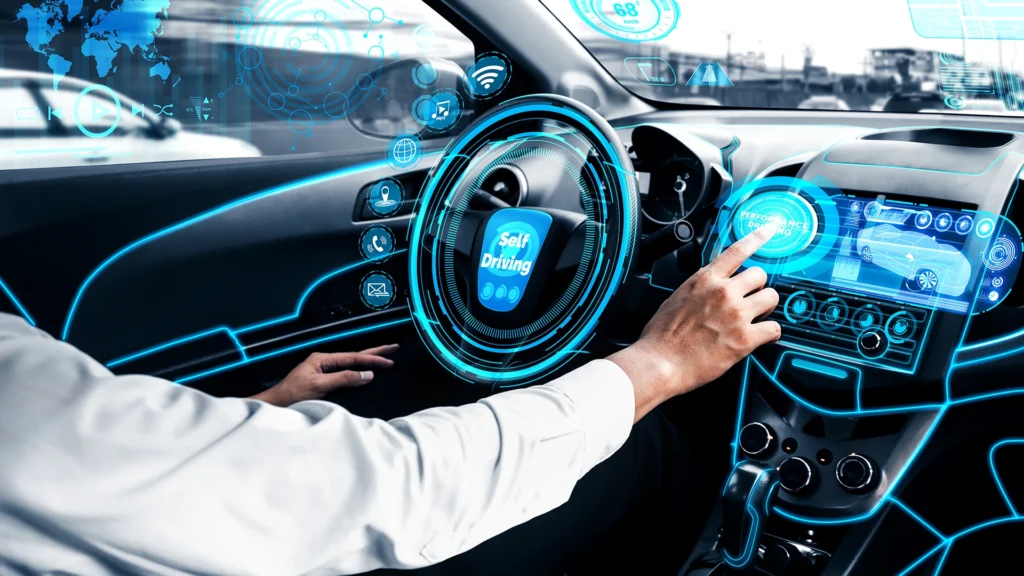
AI Integration
Artificial intelligence is changing how people use human-machine interfaces. AI makes HMI design smarter and more helpful. Many hmi manufacturers use AI to spot problems early. This helps fix things before machines break. AI also shows live data and sends alerts when needed. These features make work safer and help people choose better.
| AI-Driven HMI Feature | Description and Impact |
|---|---|
| Predictive Maintenance | AI finds problems early, so repairs happen before machines break. |
| Adaptive User Interfaces | Interfaces change based on user actions and needs, making them easier to use. |
| Real-Time Data Visualization | AI shows important data and alerts, helping operators focus on what matters most. |
| Voice and AI-Driven Controls | AI understands voice commands, even with different accents or emotions. |
SOUSHINE uses smart engineering to add AI to their HMI solutions. Their human machine interface design uses predictive analytics and smart alarms. This helps companies stop downtime and keep people safe.
Voice and Gesture Control
Voice and gesture control are now common in HMI design. These controls let people use machines without touching anything. Voice systems in smart homes follow spoken commands. Gesture controls use cameras or sensors to read hand moves. This makes machines easier and safer, especially when hands-free is needed.
- Gesture control uses cameras to read simple hand signs.
- Special devices track small hand moves for control in virtual spaces.
- Voice control uses AI to understand speech in many languages.
- These features help in cars, homes, and factories for faster, safer work.
SOUSHINE’s team builds HMI solutions with voice and gesture controls. Their products work with touchscreen panels, plc interface, and plc hmi systems. This gives users more ways to use machines.
IoT Connectivity
IoT connectivity links HMIs to smart device networks. This turns human-machine interfaces into strong control centers. Users can check data and control machines from anywhere with tablets or phones. IoT makes it easy to connect with hmi scada system setups and other smart devices.
- HMIs show live sensor data and let users act from far away.
- Interfaces connect with many devices for smoother work.
- IoT gives HMIs more uses and makes them flexible.
- Personalization and easy navigation help users feel happy.
SOUSHINE’s HMI solutions use IoT for more control and better info. Their human machine interface manufacturers team designs products for modern networks. This helps companies stay ahead as technology changes.
Note: The future of HMI design will bring smarter, more connected, and easier systems. SOUSHINE’s skill in engineering and integration helps customers get ready for these new trends.
Human-machine interfaces help people use technology easily and safely. Experts say HMI design now uses AI, voice, and gesture controls. These features help people finish work faster and smarter. SOUSHINE and other hmi manufacturers make advanced solutions for users. Their ideas make using machines better and bring new inventions. People use human machine interface design in touchscreen panels every day. They also use it in plc interface and hmi scada system. As technology changes, hmi manufacturers will keep making better tools. Human machine interface manufacturers will help people connect with machines in new ways.
FAQ
What is a human-machine interface (HMI)?
A human-machine interface lets people use and watch machines. It has hardware like touchscreen panels and uses software to make things easy. HMI design helps people work with technology in places like factories, hospitals, and homes.
Why do industries use HMI SCADA systems?
Industries use HMI SCADA systems to control big processes. These systems show live data, alarms, and trends. Operators can act fast and keep machines safe.
How do touchscreen panels improve HMI design?
Touchscreen panels make HMI design quick and simple. Users tap icons or buttons to use machines. This way lowers mistakes and helps people learn new systems fast.
What is the difference between a PLC interface and a PLC HMI?
A PLC interface links a programmable logic controller to other devices. A PLC HMI adds a screen that is easy for people to use. Both help operators run machines, but the HMI gives more info and easier control.
How do hmi manufacturers ensure product reliability?
HMI manufacturers check products for strength and accuracy. They use strong materials and new technology. Human machine interface manufacturers like SOUSHINE give ready-to-use assemblies to lower risk and make setup faster.
Can HMI solutions help people with disabilities?
Yes. Good human machine interface design has things like big buttons, voice commands, and haptic feedback. These tools help people with different needs use machines safely and easily.
Why is customization important in HMI design?
Customization lets users change layouts, colors, and controls. This helps the interface fit different jobs and needs. Custom HMI design makes things more comfortable and helps everyone work better.
What role does SOUSHINE play among hmi manufacturers?
SOUSHINE is special among hmi manufacturers because they give full solutions. Their products use force sensing, membrane switches, and ready-to-use assemblies. This helps many industries and makes human machine interface design better.
Tip: Picking the right HMI design and working with trusted human machine interface manufacturers helps companies make safer, smarter products.


